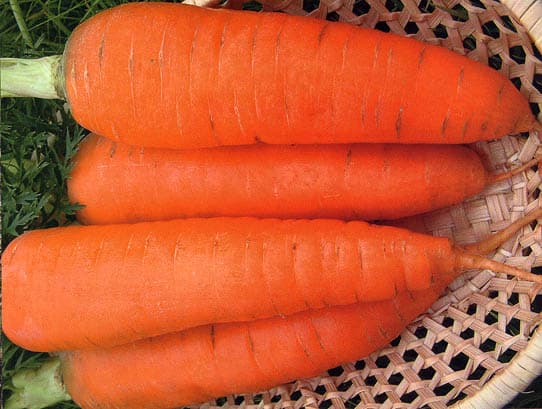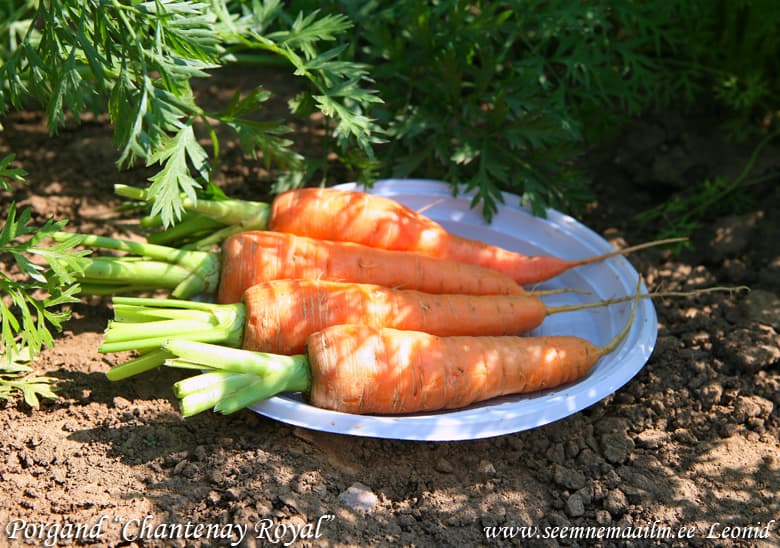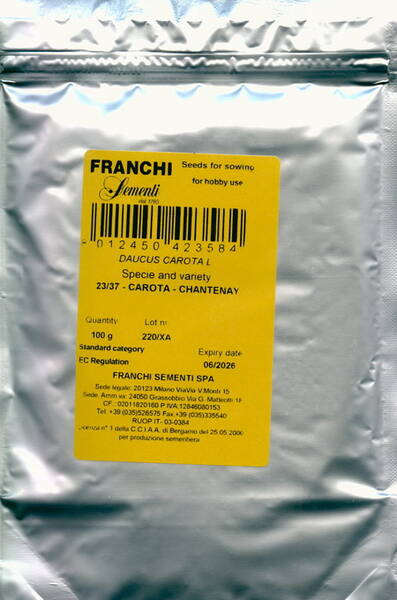Excellent palatability, high resistance to flowering and cracking.
A popular mid-season variety (the period from full shoots to technical ripeness is 65-105 days) with a high content of carotene and excellent taste. Gives a high yield in all regions, especially on heavy soils.
The root crop is cone-shaped, levelled, orange in colour, with a small core. Up to 15 cm long and weighing 100-250 g, with dense, sweet and juicy pulp.
Well stored in winter, used for fresh consumption and processing. Productivity is 4-8 kg/sq.m.
1,0 g = 800-1000 seeds.
Agricultural technology.
Carrots grow best on light loamy and sandy soils. Potatoes, onions, tomatoes, cucumbers and legumes are considered the best predecessors. In the spring, before sowing, a complex mineral fertilizer is applied to the soil.
Sowing at the end of April in furrows to a depth of 3-4 cm. The distance between rows is 18-20 cm. 2 weeks after germination, the carrots are thinned out. The second thinning is carried out when the root crops reach a diameter of 1 cm, leaving 5-6 cm between plants. Further care consists in weeding, loosening, and watering.
Winter crops are carried out when the temperature drops to + 5 ° C. (second half of October - beginning of November). Seeds are planted to a depth of 1-2 cm, and the surface of the site is mulched with peat.

* Thinning carrots.
After the appearance of the 1st and 2nd true leaves, it is necessary to start thinning the carrot crops. It is necessary to leave a distance of 3-4 cm between plants. The plants remaining after thinning are watered with warm water (+18 ... + 20 ° С) at the rate of 2-3 litres per 1 m2. The earth around the plants is compacted, and the aisles are loosened.
During the thinning of plants, a carrot smell appears, which attracts a carrot fly, so this work is best done in the evening, and the pulled-out carrot plants are removed into a compost heap and covered with earth or sawdust. It's a good idea to dust the thinned bed with ground pepper to drown out the smell of carrots. After repeated weeding, the bed should be watered again, and the earth around the plants should be compacted so that the roots of the plants are not exposed.

Carrot "Chantenay". Non-hybrid, Untreated, Non GMO. Bot.: Daucus carota L.











